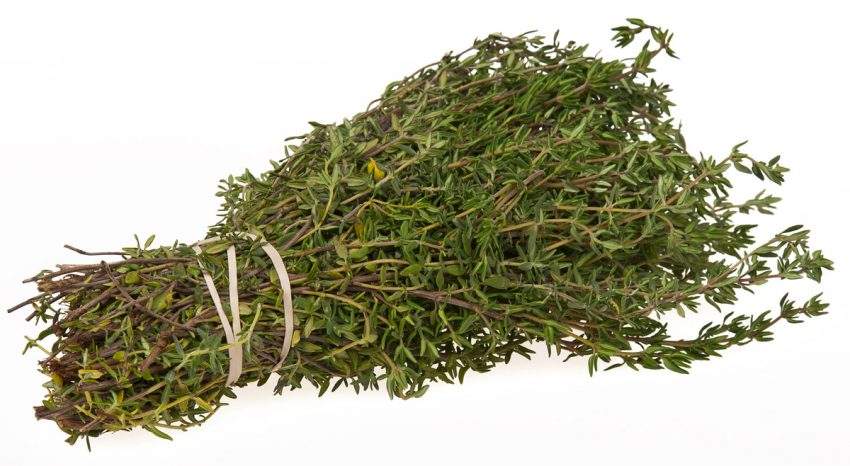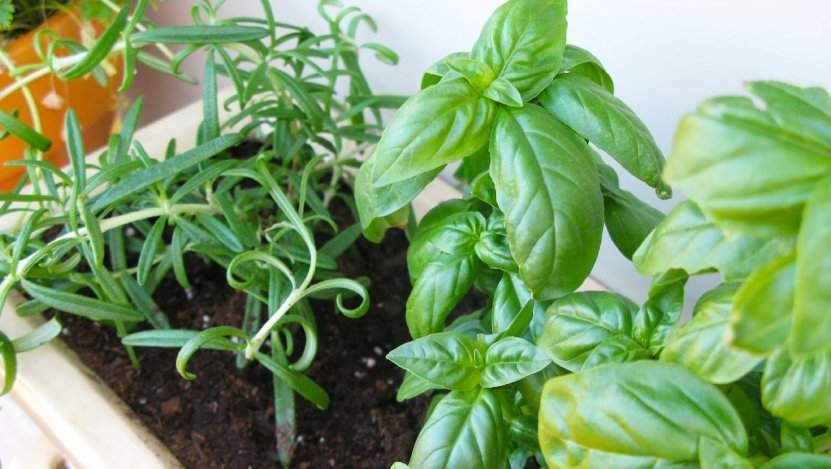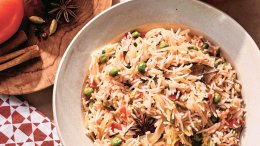Growing herbs (calm down, not the skunky kind) isn’t just for suburban moms. If you think you’re too cool to be digging around in the dirt, and you’re buying herbs that come in more packaging than there are greens, then you need to check out what many chefs are doing, growing their own food and foraging for ingredients. It’s certainly more satisfying to use herbs that come from your own garden, especially given what they cost to buy.
You don’t need a plot of land to grow your own fragrant and tasty herbs. If you have a little extra wiggle room on your patio, balcony, staircase or windowsill, consider planting a couple of simple herb pots just an arm’s length away from your kitchen.
Here are five herbs that can easily be grown during our short summer that will have you hooked on fresh this season.
Photo by janeyhenning on Flickr.
Basil
Basil can be a little finicky. It doesn’t like it too cold, and it likes plenty of water, but not too much water. Place your basil in full sun, with rich, moist soil. Make sure not to plant until the last frost has passed. I know, this can be tricky in Canada at times, so if Mother Nature gives you one last whiplash of cold air (below 10C), be sure to bring your basil pot inside at night. It’s no secret tomatoes and basil are a culinary match made in heaven, but did you know they are also complementary growing buddies? Plant these two in a pot together, and you’ll see astonishing results as they share nutrients under the soil. The tomatoes will enhance the flavour and aroma of the basil, and the aroma from the basil repels whiteflies, mites, aphids and other bugs seeking to eat the tomatoes.
Mint
Mint is an invasive herb and doesn’t play well with others. Be sure to give it its own pot; otherwise, say goodbye to your other herbs. Whether it’s a mild spearmint or stronger peppermint, this versatile herb is a sun baby and relatively low-maintenance. Simply plant in full sun with moist soil, and it will pretty much take care of itself and spread like wildfire. Use the leaves to jazz up cocktails, make mint tea, freshen your water, or add to Asian dishes, like Thai beef salad and chilled noodles salads. It also makes wonderful aromatic greenery for fresh cut flowers.
Thyme

Watering everyday? Ain't nobody got thyme for that. (Sorry, we had to.) This highly aromatic herb is a low growing herb and likes dry, well-drained soil, which means low-maintenance when it comes to watering. If over-watered, the herb will rot and mold, so make sure the soil dries out completely between waterings. Thyme can be used with pretty much all meats, vegetables, marinades, and salad dressings. Think Greek, Italian, Mediterranean.
Rosemary
Much like thyme, rosemary is a sun seeker that needs well-drained soil and likes to dry out between waterings. However, like mint, rosemary likes its own personal space and prefers its own pot. This perennial thrives in the heat of a Canadian summer, but in order to ensure it lasts until next season, bring it inside and set on a sunny windowsill during the cold winter months. To encourage growth, snip the ends often. This powerful, woody-stemmed herb with needle-like leaves is perfect for roasted potatoes, lamb, pork and chicken. It also provides a brilliant flavour in breads and makes a good marinade with olive oil, balsamic vinegar and garlic. Just make sure you season with a light hand as its piney flavour can be overwhelming.
Cilantro
Love or hate this strong, sharp herb, it’s a staple in many Mexican, Spanish, Caribbean, Indian and Asian dishes, so you might as well make nice. With cilantro, you actually get two herbs in one. The leaves are known as cilantro to North Americans (although the Brits and Aussies call it fresh coriander), while the seeds are known as coriander. Cilantro is easy to get started in the garden, hard to sustain. It tends to grow so fast and goes to seed before you know it, but that’s just the life span of cilantro. To keep leaf production up and delay the flowering, pinch back the flowers before they fully develop and harvest the leaves regularly. To keep a stash all summer long, plant new pots from seed regularly. Cilantro likes regular waterings, a lot of sun, but not too much heat. Try planting it with tall herbs (like dill) to provide it with a little shade throughout the day. Use it in fresh salsas, guacamole, vinaigrettes, or raita (Indian yogurt).













